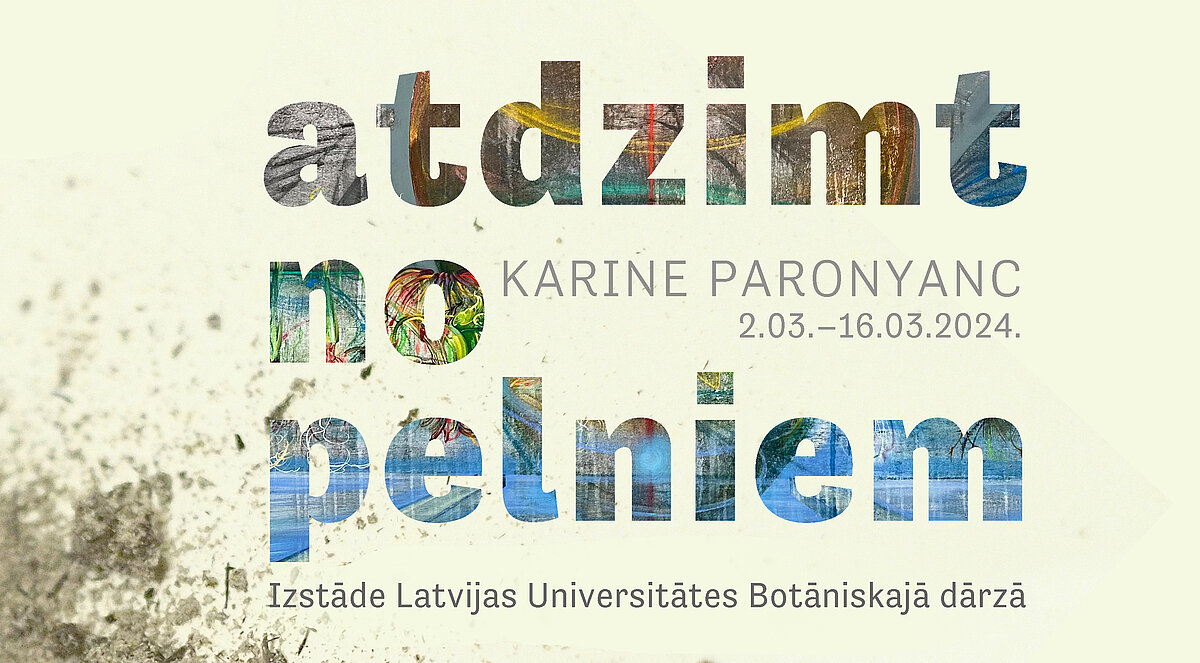
First person annotation
Botanical gardens throughout the world carry a noble mission of preserving biodiversity on our planet. The main strategy is easily transferable into few words – to save, preserve, multiply, and return. Botanical gardens around the world have become, in fact, the only centers actively working on the preservation of rare and endangered plant species.
Water is the primary source of life on Earth. Therefore, exposition starts with a plain but sincere installation in the ‘water’ house (old water pumping station’s building). I enjoy opening new and unknown garden spaces to the viewer and telling him their wonderous story. There was a time when it was this pumping station that supplied the entire garden with water, life started here...
Fire is the primary element, the first of the four elements of the Universe. The guests of the opening will be invited to warm themselves by the fire, which is also a part of the revival ritual. I paint on canvases primed with ash from fires. This ancient recipe of priming, well known to old masters, is akin to metaphor of Phoenix rising from the ashes, a kind of search for new forms in the ashes of meanings and images long gone and lost.
This time I will set on fire and burn in a big bowl… my early works, the canvases I deem not altogether successful, the works that drag after them a tangle of unwelcome memories and creative disillusions. I will use the ashes for priming new canvases of fresh paintings.
This is a purging ritual of a sort, while the exhibition itself is a farewell gesture of grateful goodbye to the garden, which sheltered me and gave me so much inspiration. The old buildings of the estate are being closed for renovation.
It proved a truly incredible experience, when everything so important for my work came together: the cultural and historical context, science and botany, and most importantly, people.
I call my favorite botanists acolytes, the monks of the Temple of Nature. Artists and botanical garden employees have very much in common. This is hard, often physically exhausting work, demanding a huge resource of patience and perseverance, which, by the way, due to ignorance is far from being always appreciated and adequately paid for, but one continues to carry on one’s mission with honor and against all odds.
The main part of the exhibition will take place in the event space “Šķūnis” (gardenshed). These botanical fantasies are painted on the ashes from fires and furnaces of our garden, in which last year’s wreath left from St. John’s Night and the Christmas tree had been burnt. Traditionally, they add honey to such prime to raise the plasticity of the canvas, so do not be surprised if you suddenlyseem to hear the bees buzzing in these canvases…
It is hard to imagine anything more beautiful and suitable for an artist’s studio, than my Eden, the green pearl of Riga. I am sure, this is the beginning of something new, and I hope for rising from the ashes…
The exhibition will open for visitors in Kandavas street 2, Riga on 2 March and run through 16 March. During this period, it will stay open daily from 10:00 till 16.00.
During the opening part we will show you a film at the event space "Šķūnis", created by a veteran worker of the garden to honour the 100th anniversary of the Latvian University botanical garden. This is a unique opportunity to see the daily working routine of the Botanical garden through the eyes of its faithful attendant.
A map showing the location of all art objects is available at the ticket office.
Audio design by Shri Alex
Film and technical design by Eric Dovnarovich
Visual identity Lauma Keire
Myspecialthanksfor historical and scientific advice are extendedtothe long-term director of the Garden, Professor Uldis Kondratovich.
I would like to express my appreciation to the administration of the Garden and personally to Mrs. Ilze Donova for their kind support.
Information prepared by Karine Paronyanc
www.karineparonyanc.com

 CONFERENCE
CONFERENCE